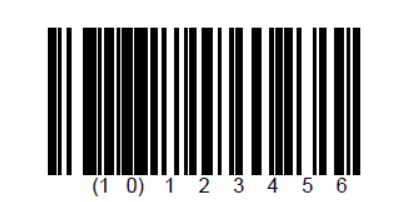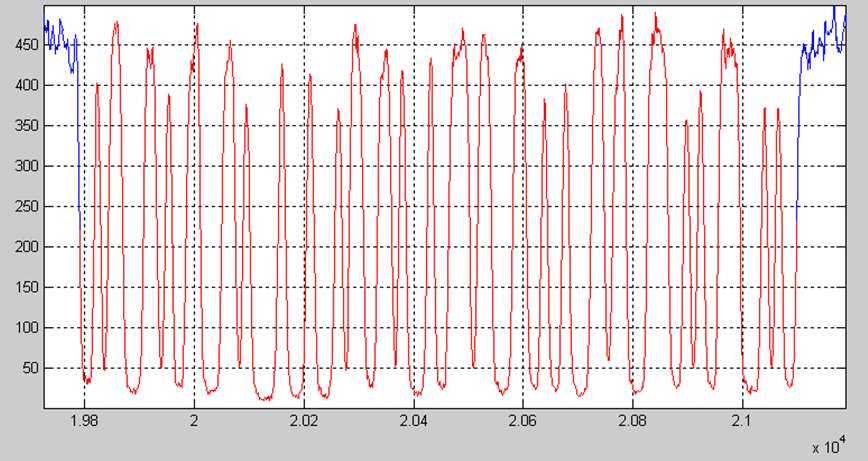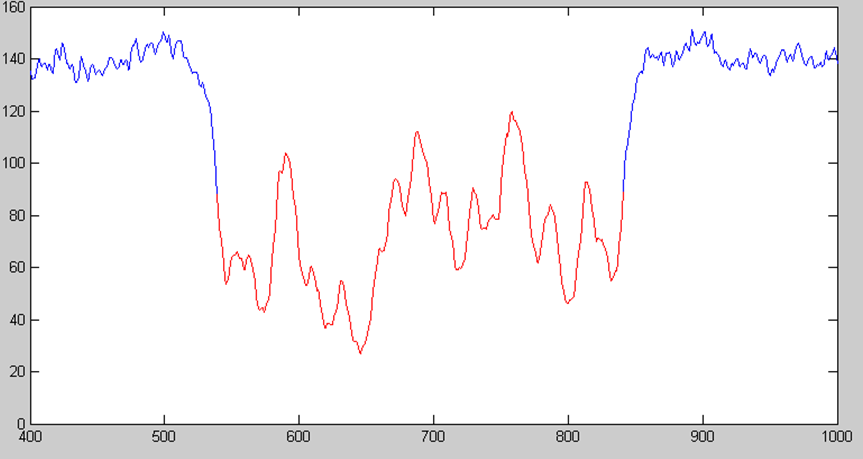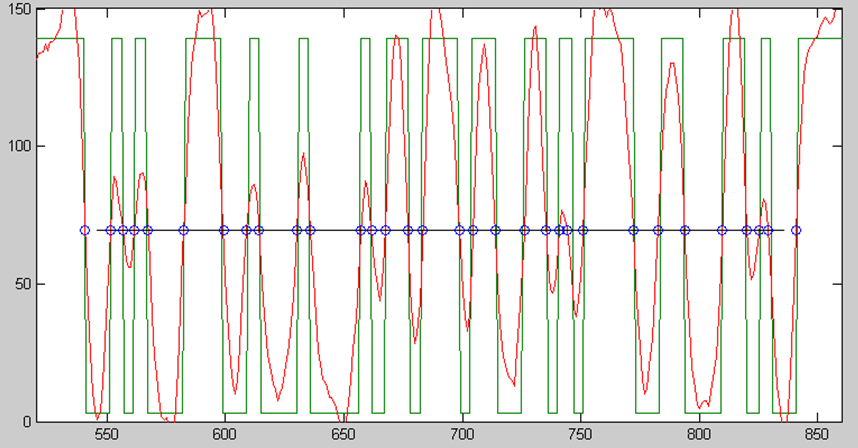Blurring is a significant source of image degradation in an imperfect imaging system. The optical system’s point spread function (PSF) describes the measure of blur in a given imaging system and is often used in image reconstruction or image recovery algorithms. Below in example of using inverse PSF to eliminate the barcode image degradation.
Barcodes are found on many everyday consumer products. A typical 1-D (one-dimensional) barcode is a series of varying width vertical lines (called bars) and spaces. The example of the popular GS1-128 Symbology barcode is shown here:

The signal amplitude of code image only has changes in horizontal direction (i.e. X-direction). For the imaging system used to capture and decode the barcode it is sufficient to look at one-dimensional intensity profile along the X-direction.
In good conditions the profile may look like this:

Using such a good scan, it is trivial to recover initial binary (only Black and only White) barcode.
One can set threshold in the middle between maxima and minima of the received signal, and assign whatever is above the threshold to White, and below the threshold to Black.
However, in situations when the Point Spread Function (PSF) of the imaging system is poor, it may be difficult or impossible to set the proper threshold. See example below:

PSF is the impulse response of an imaging system, it contains information of the image formation, systematic aberrations and imperfections. To correctly decode barcode in such situations one may try to use inverse PSF information to improve the received signal.
The idea is to deduce inverse PSF from the multiple signals obtained from the many scans of different barcodes of the same symbology. All barcodes of the same Symbology, such as GS1-128, have the same common features defined by the Symbology standards. This permits us to calculate inverse PSF coefficients by minimizing deviation of the received signals from the ideal barcode profile signals. A small number, such as 15, of the inverse PSF coefficients may be used to correct the received signals to make them as close to barcode signals as possible in the Least Squares sense.
The inverse PSF coefficients were found and used to convert poor received signal shown previously into better signal shown on the next picture by red:

While the recovered red signal is not ideal, it does permit to set threshold and correctly recover the scanned barcode.
GREAT ARTICLE!
Share this article to gain insights from your connections!

